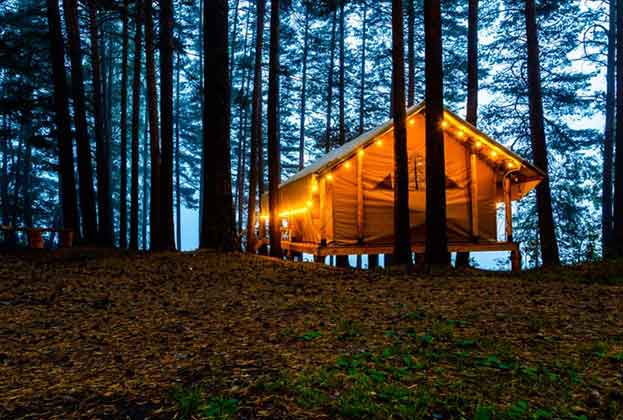For rural businesses keen to tap into the growing appetite for sustainable tourism and leisure, introducing cycling to the mix is an effective way to reduce emissions and cost for both visitors and the enterprise.
Done well, it can enhance the wellbeing of customers and provide them with a unique experience. Given how central the trends of sustainability, experience, wellbeing and value for money now are to the decision making process of tourists, it is unsurprising that active transport is increasingly being incorporated into visitor attractions.
Our latest Spotlight on rural tourism and leisure showcases three rural businesses which have attempted to cater to visitor demand by integrating cycling facilities into their existing enterprise
Establishing a cycling-specific diversification from scratch could also prove successful, but identifying which type of cyclist the new venture will appeal to will be important if it is to flourish.
Of course, not all cyclists will see themselves fitting into one category or another but in order to highlight some of the options for a new business we have chosen three distinct groups.
The mountain biker
Who are they? Chunky tyres and suspension allow mountain bikes (MTBs) to tackle a range of off-road terrains and topographies. Some will simply use a MTB to take them away from busy roads and onto towpaths and through country parks. Others will seek out dedicated trails to test their skills and get their thrills.
How to diversify? It is essential to define a target mountain bike audience from the outset. Creating simple paths and offering e-mountain bikes will appeal to that more general audience wanting to explore more of the local area and not be impeded by steep hills or difficult terrain. Creating dedicated, complex trails will attract a smaller group of specialist mountain bikers, but these will be willing to pay a premium for a new and unique challenge.
The roadie
Who are they? As the name suggests, the roadie sticks to roads, often with other members of a cycling club. Their bike, clothing, and training is dedicated to speed and comfort to allow them to cover as many miles per ride as possible. These cyclists are identifiable through their curved handlebars (known as drop bars), narrow tyres and fitted clothing.
How to diversify? Covering so much ground demands a lot of fuel and the pockets of the roadie will often be filled with energy gels, energy bars and energy drinks. Despite such abundant supplies, there is no substitute for cake and coffee, so a cycling-friendly café will rarely be overlooked. Indeed, route planning will often centre around a favourite café stop and so the potential for repeat custom each weekend is high. As well as food and drink, ensure the café provides secure bike storage in a visible location for peace of mind.
Adventurers
Who are they? The gravel bike is a recent cycling phenomenon. It is somewhere between a sleek, fast road bike and a durable, adaptable mountain bike, with both drop bars and chunky tyres. These bikes allow their riders to travel far and wide across fields and hills and away from busy roads. This flexibility has given rise to a new trend: bikepacking.
How to diversify? In theory, a bikepacker can create a shelter out of their bike and a piece of tarpaulin. In the reality of the UK climate, the comprehensive shelter offered by a tent will be sought out, as will a suitable place to pitch that tent. As with cycling cafes, bike security should be provided at the campsite but also consider offering something more advanced given the longer duration of the stay. A bike storage compound with extra security and screening from the elements will set a campsite apart from others in the local area. While bikepackers will attempt to be fairly self-sufficient, offering supplies, both in terms of personal sustenance and bike maintenance, will also be gratefully received. Rather than a shop, consider more passive options, such as vending machines that stock flapjacks and inner tubes alike.

.jpg)

.jpg)
.jpg)
.jpg)




